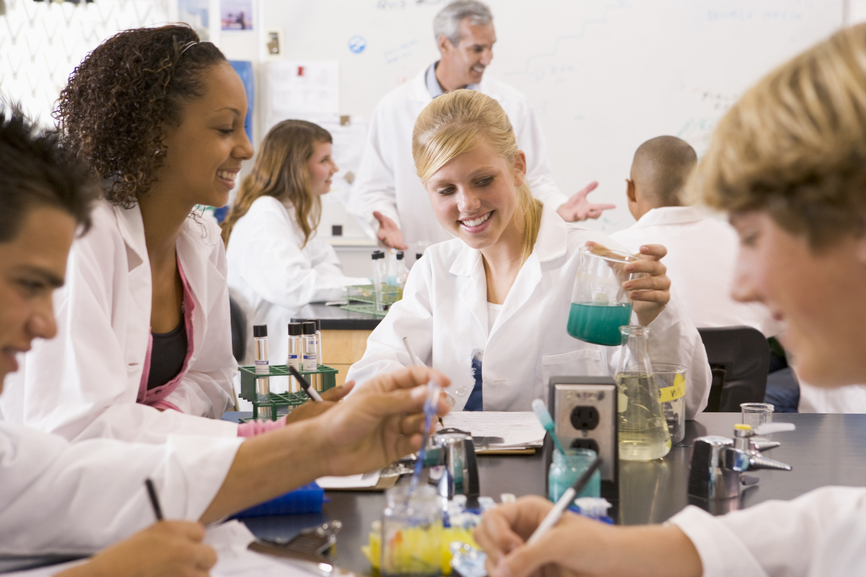
Science education has taken center stage in K-12 classrooms as a result of “No Child Left Behind” and the increasing emphasis on science, technology, engineering and mathematics (STEM) subjects. Enticing students into the world of science are improved science standards, expanded science curriculums, updated school science labs, and upgraded science lab furniture.
Since science is all around us – from the air we breathe, to the food we eat, to the objects in our environment, to the technologies, systems, and machines we use – teachers at all grade levels have multiple opportunities to integrate science into their daily classrooms. Furthermore, developing effective scientific curriculums and science lab experiments helps cultivate in students a deeper understanding of the world around them.
According to the Association for Science Education (ASE), science education in schools provides multiple student benefits. In addition to fostering the budding scientists of tomorrow, a good science curriculum:
With the push for higher state and national science standards, many schools are seeking means to update their antiquated science lab equipment and propel their school science laboratories into the 21st century. While traditional science lab furniture, Bunsen burners, and beakers are not passé, modern school science lab designs feature:
The Internet is chock-full of science teaching resources, games, quizzes, arts-and-crafts activities, and information sheets from K-12. Here are some popular school science curriculum ideas:
Even the best school science labs cannot replace the learning opportunities provided by Mother Nature, hence field trips and outings are integral to any school science curriculum. Taking students out of the classroom reminds them that science is everywhere, every day of the year.
By virtue of their curiosity, imagination, and penchant for exploration, children are natural scientists. Encourage students to think for themselves and to hypothesize, predict, discuss, and debate the scientific concepts being learned.
